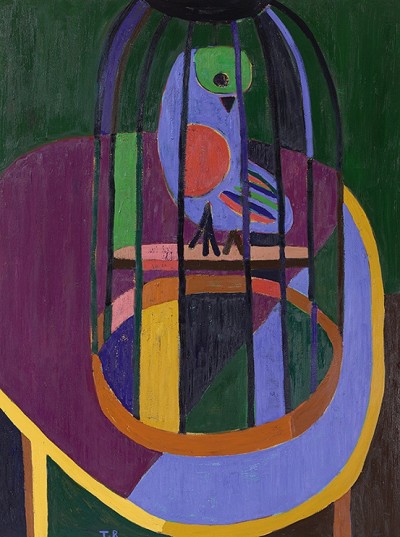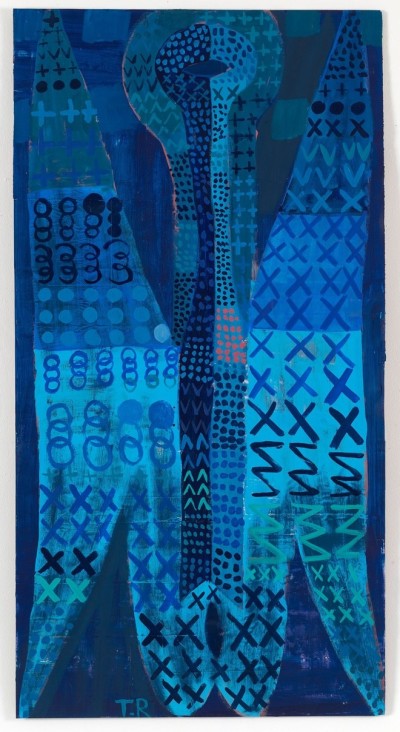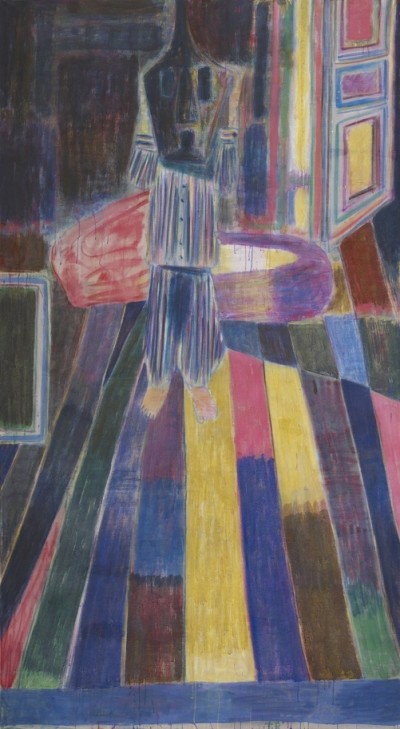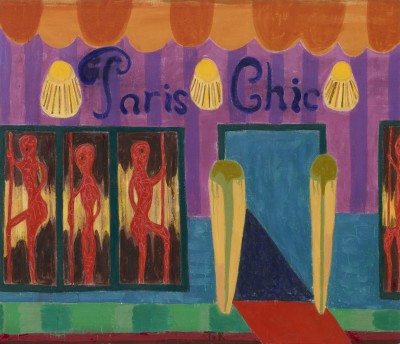About the Artist
Working across a diverse range of media including painting, drawing, print, textiles, sculpture and furniture, Tal R questions our conceptions of and presumptions about our surrounding reality – what we’re seeing and where its meaning lies. With their flamboyant colours and exuberantly painted imagery, the paintings for which Tal R first became known give the impression of being simple, almost turning high art into child's play. While they are certainly direct, with paint often squeezed straight from the tube, his canvases in fact wear their sophistication and intelligence lightly. Central to the work is Tal R's profound understanding of painterly tradition which simultaneously accommodates muscular, expressive brushstrokes used to describe people, objects or places, and a stabilising pictorial format informed in part by formalist abstraction. These early paintings are divided into three horizontal bands which can be read by the viewer as levels of different activity.
Survey: Selected Works
-
![]() Untitled Flowers, 2022
Untitled Flowers, 2022 -
![]() Untitled Flowers, 2022
Untitled Flowers, 2022 -
![]() Untitled Flowers, 2022
Untitled Flowers, 2022 -
![]() Babylon, 2017
Babylon, 2017 -
![]() Blue moon, 2015
Blue moon, 2015 -
![]() Dirty Dick, 2017
Dirty Dick, 2017 -
![]() Satie moon walking, 2014
Satie moon walking, 2014 -
![]() Chimney, 2013-2014
Chimney, 2013-2014 -
![]() Walk towards Hare Hill, 2013
Walk towards Hare Hill, 2013 -
![]() Walk towards Hare Hill, 2013
Walk towards Hare Hill, 2013 -
![]() Pyjamas, 2011
Pyjamas, 2011 -
![]()
Science Fiction, 2011
-
![]() Hermès, 2011
Hermès, 2011 -
![]() Lady, 2009
Lady, 2009 -
![]() The Japan, 2009
The Japan, 2009 -
![]() Fast Turtle March, 2008
Fast Turtle March, 2008 -
![]() Title year name, 2006
Title year name, 2006 -
![]() Gimi, Gimi, Gimi after Midnight, 2005 - 2006
Gimi, Gimi, Gimi after Midnight, 2005 - 2006 -
![]() Untitled, 2005
Untitled, 2005 -
![]() New Quarter, 2003
New Quarter, 2003 -
![]() Hornyyou, 2003
Hornyyou, 2003 -
![]()
Lords of Kolbojnik, 2002-2003
In Focus – Tal R: Untitled Flowers
Filmed on the occasion of Untitled Flowers, an exhibition of new paintings by Tal R. The paintings are complemented by a large-scale installation of new and recent drawings. On view in the waterside garden are a number of recent bronze sculptures by the artist.
















































































